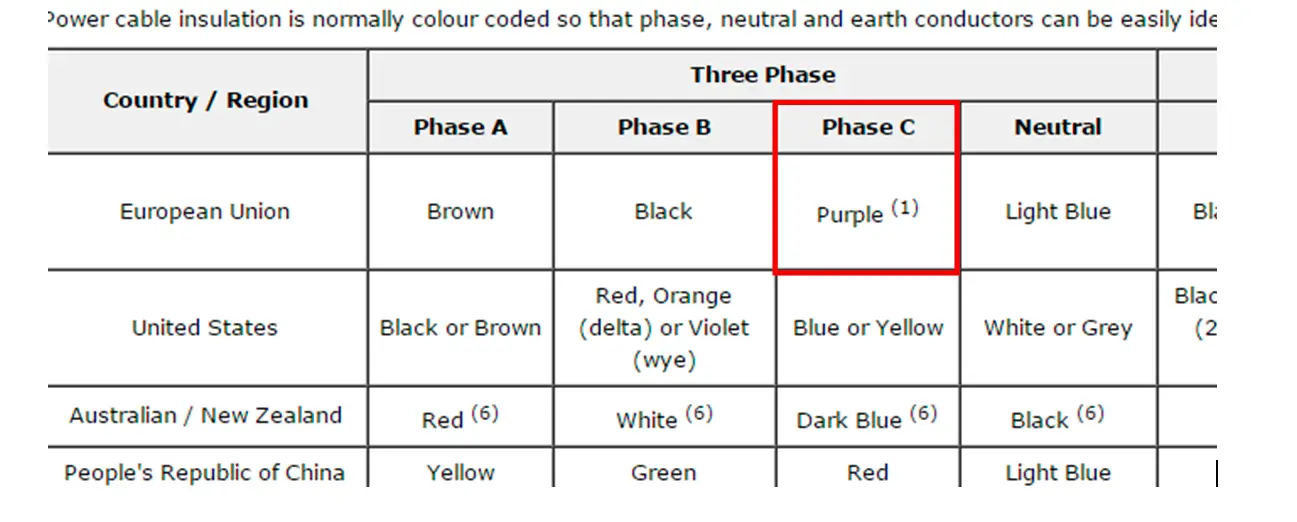This article here suggests that the colour of the 3rd line conductor in the EU (and thus also in the UK) is purple! 

Is this a simple editing mistake as I am hoping, or can purple wires really be used in place of grey wires for 3rd line/phase conductors to my horror?
as I am hoping, or can purple wires really be used in place of grey wires for 3rd line/phase conductors to my horror? 

Worth noting that I have not seen Purple used as a wire colour in the UK before other than for things like control circuits such as within CH/HVAC systems, within appliances, etc...
Is this a simple editing mistake
Worth noting that I have not seen Purple used as a wire colour in the UK before other than for things like control circuits such as within CH/HVAC systems, within appliances, etc...


